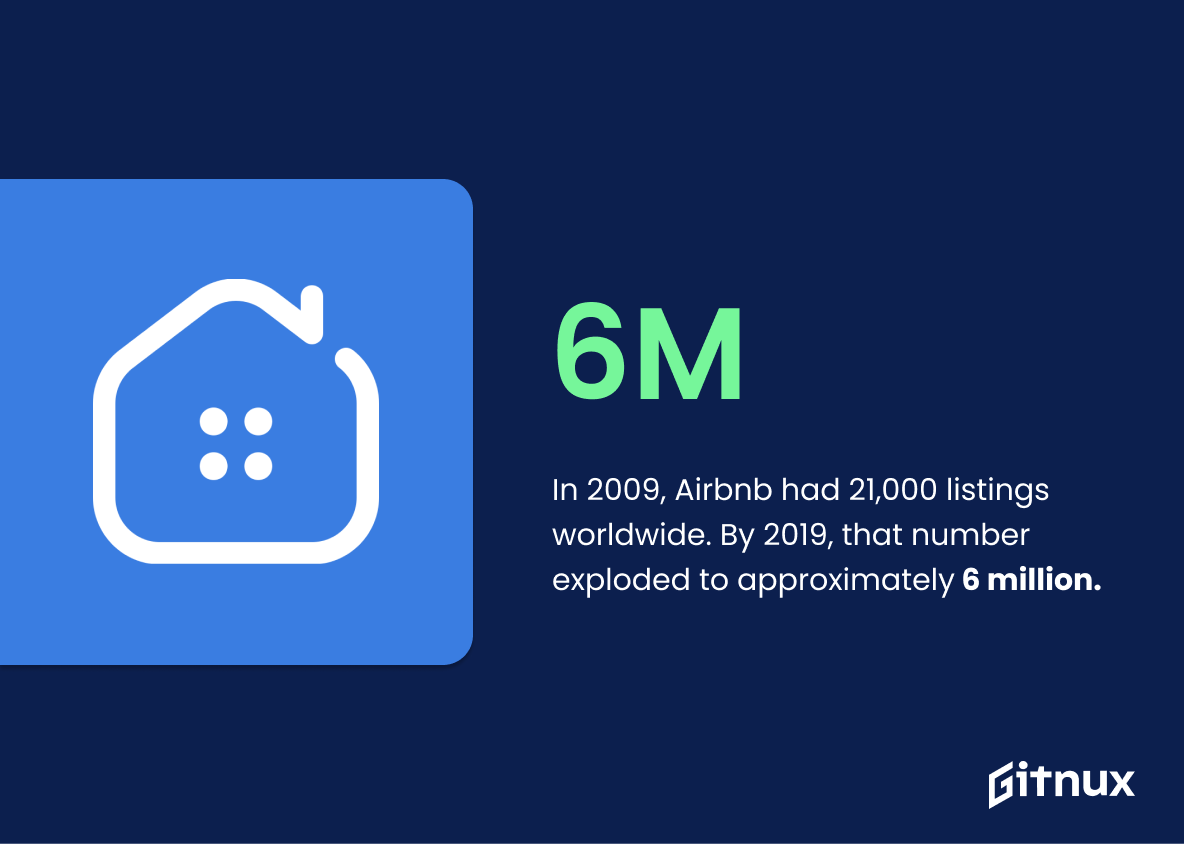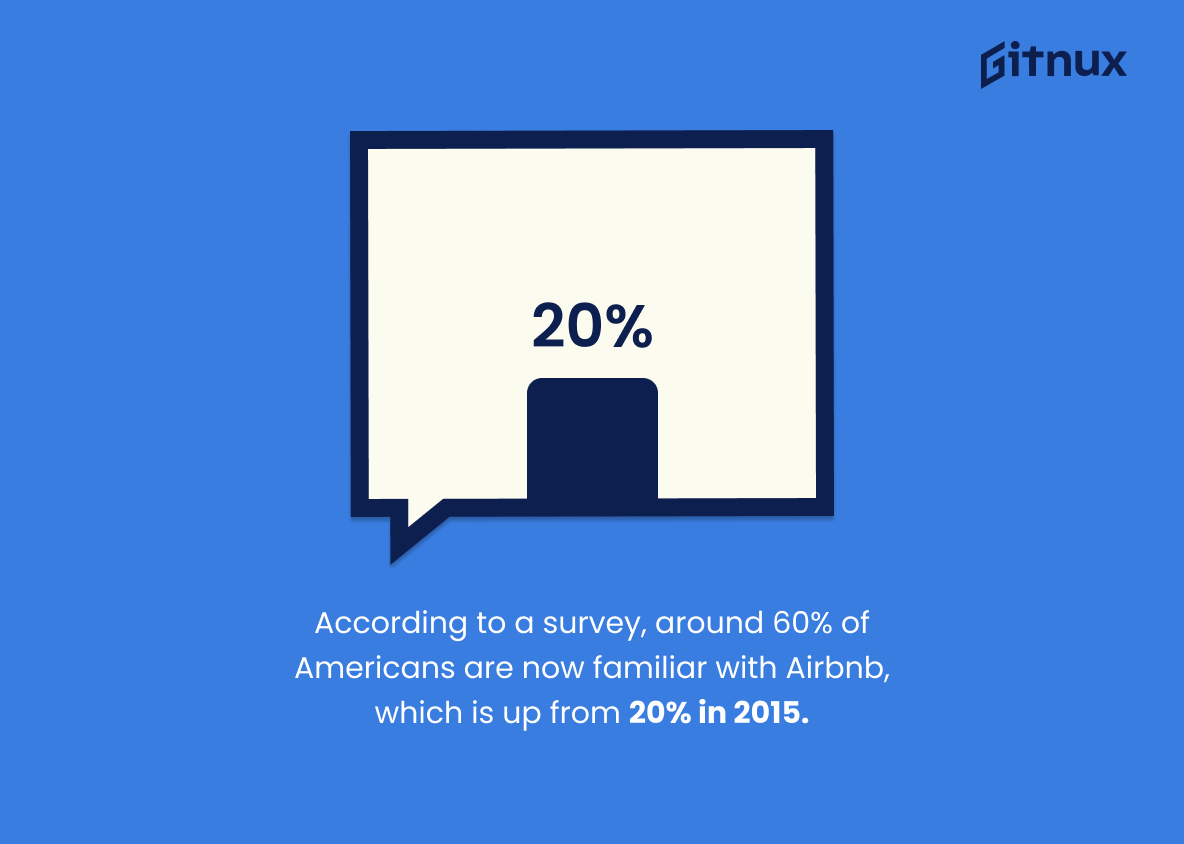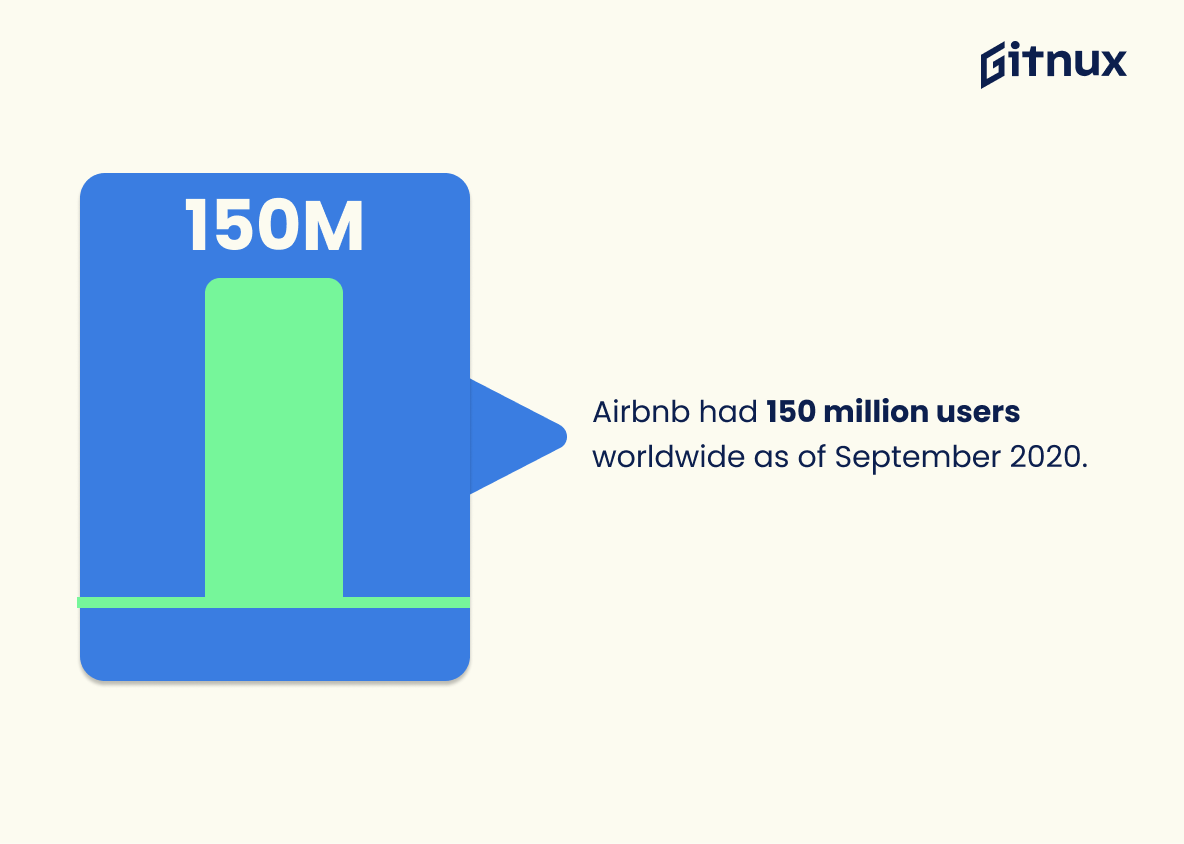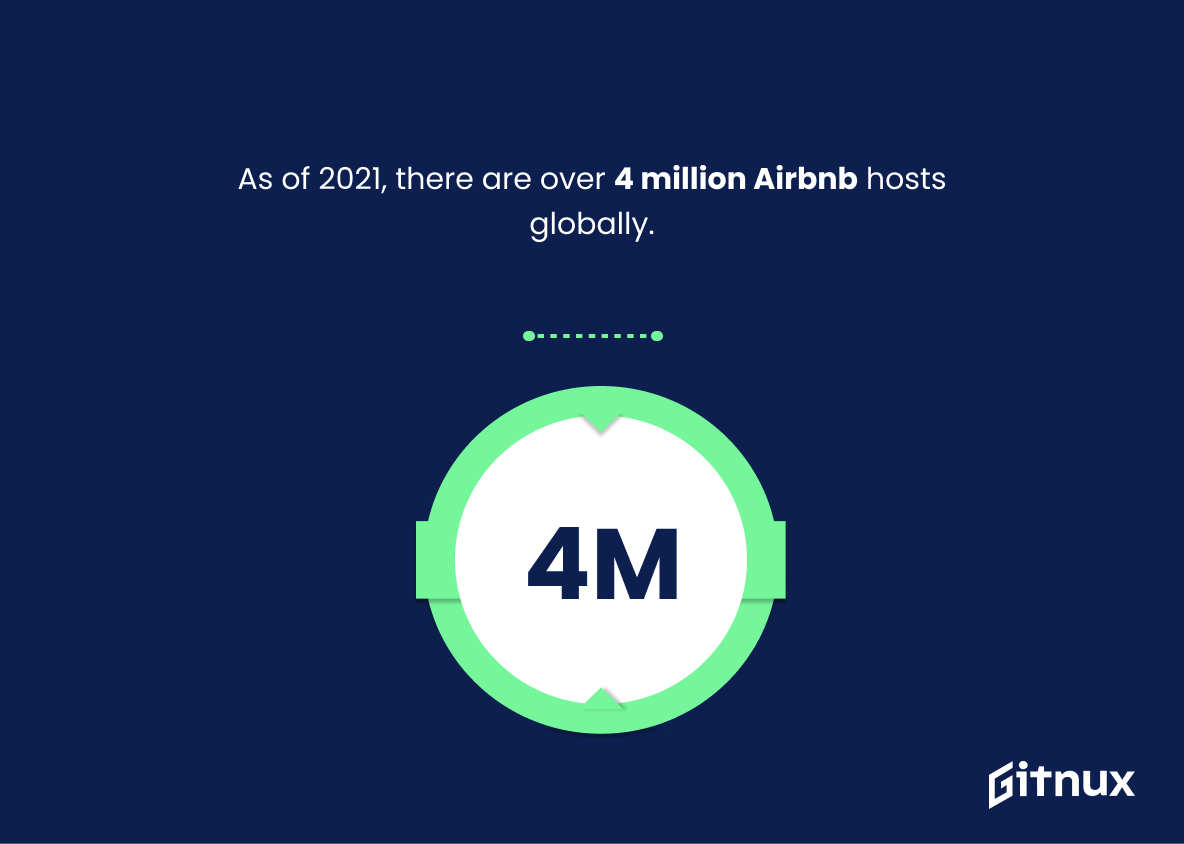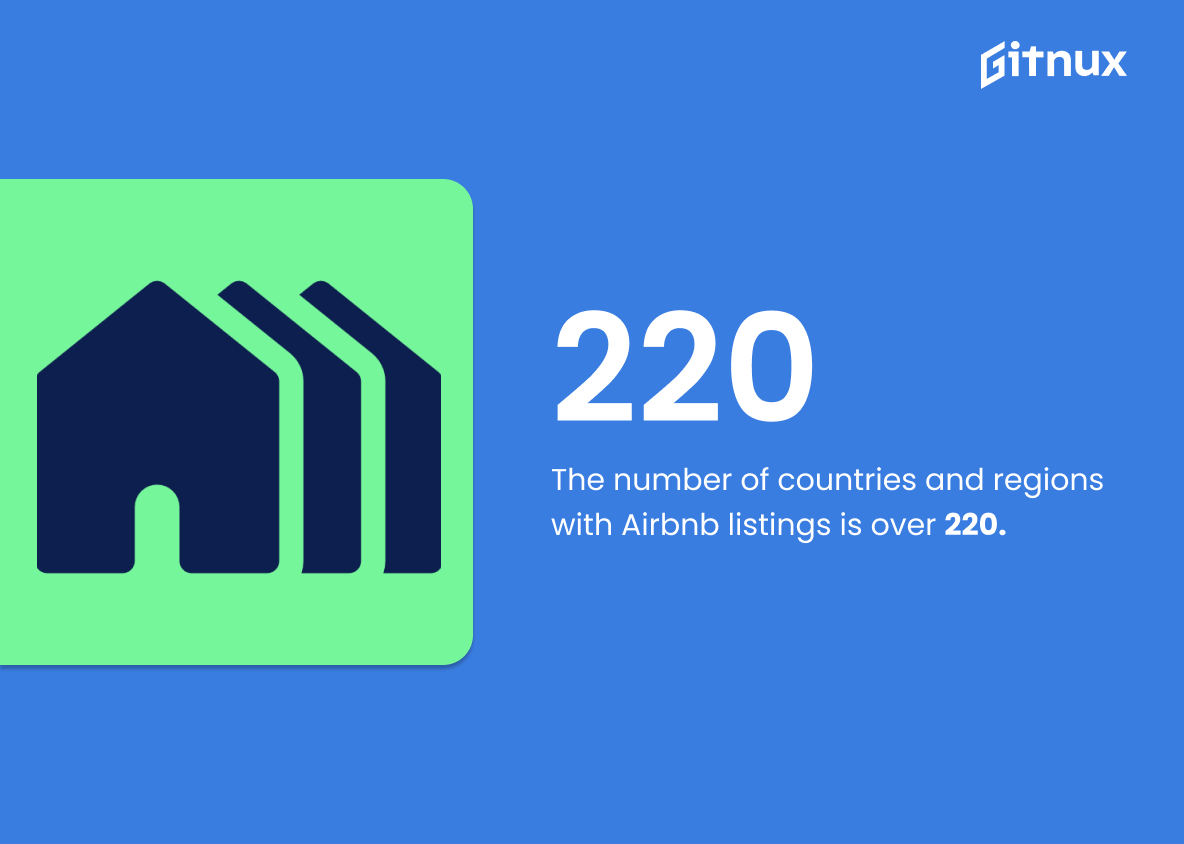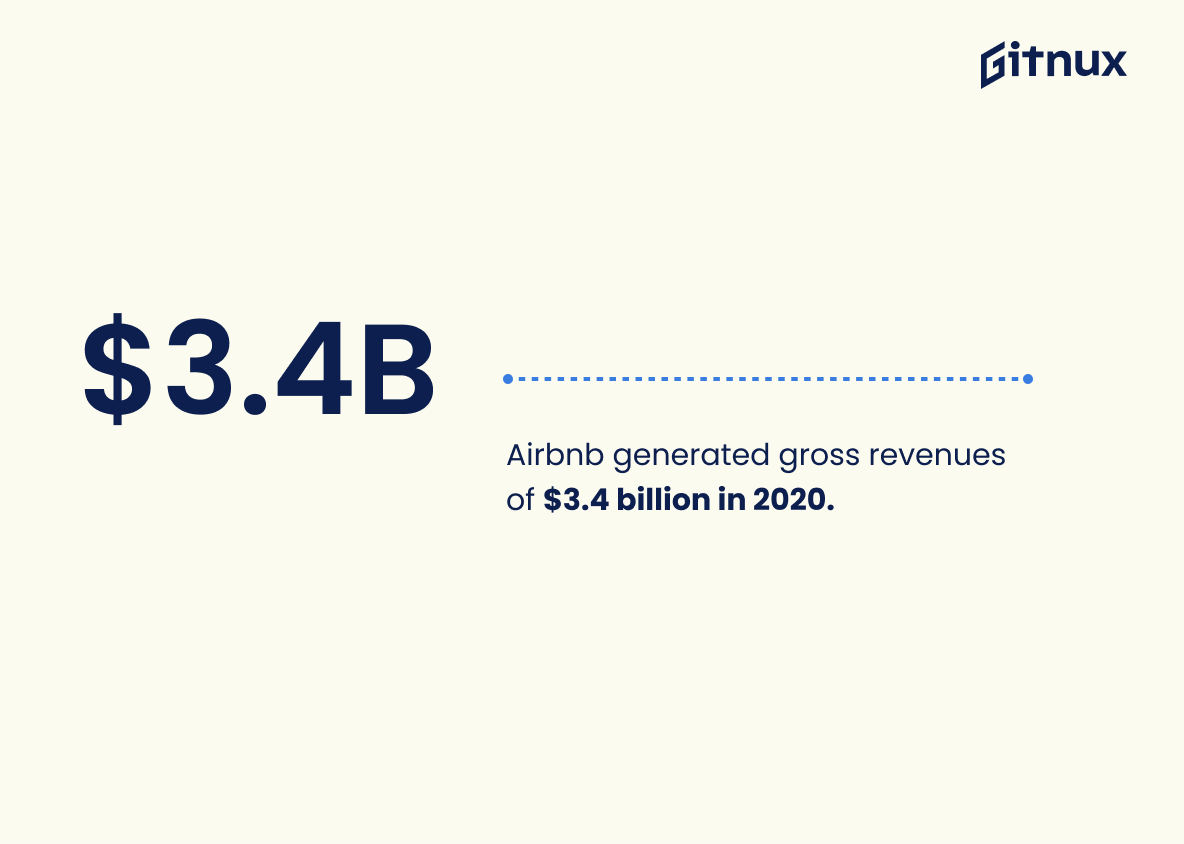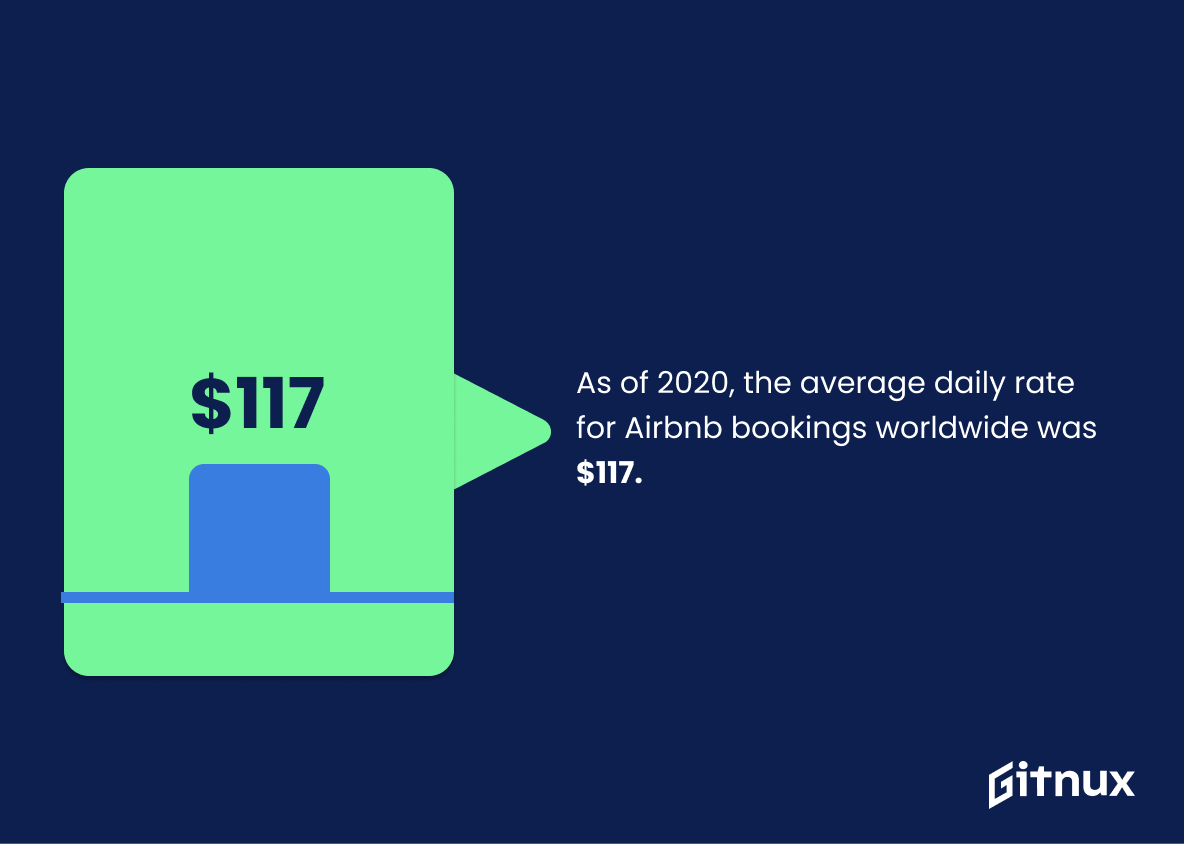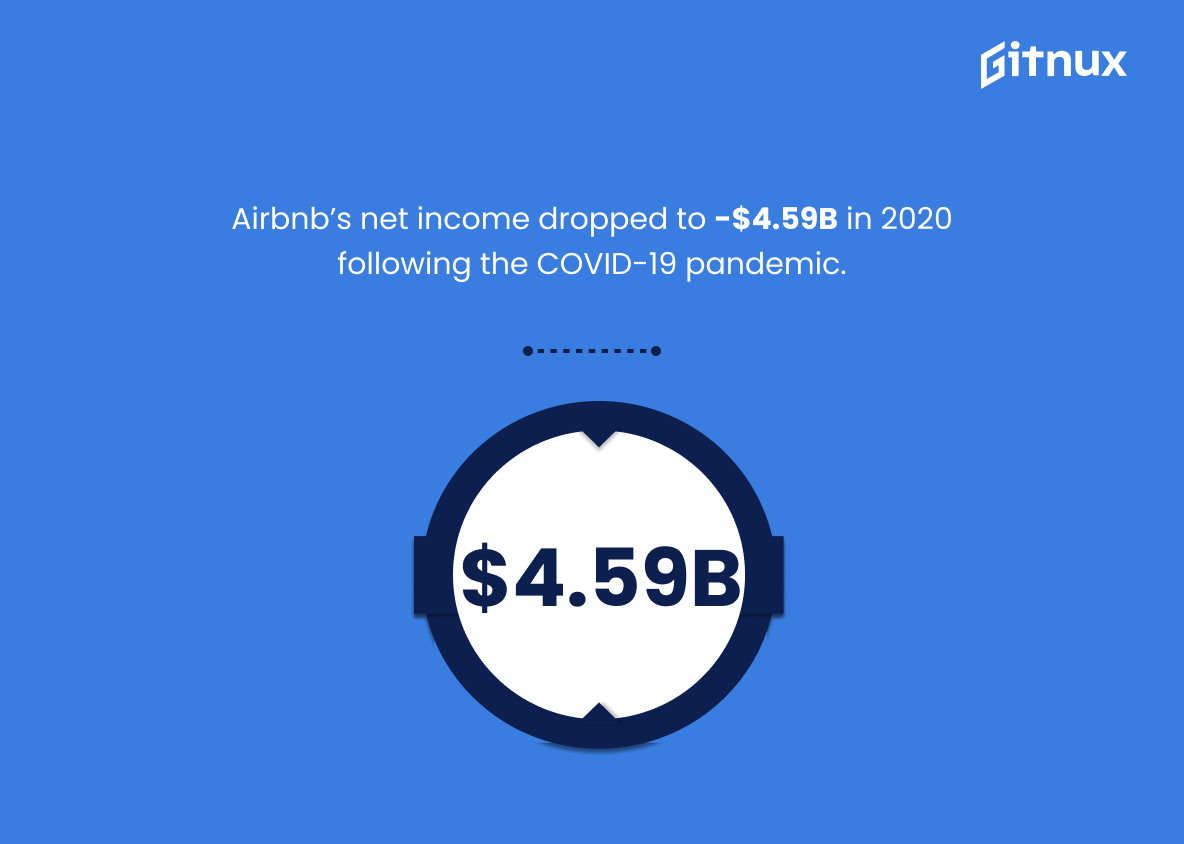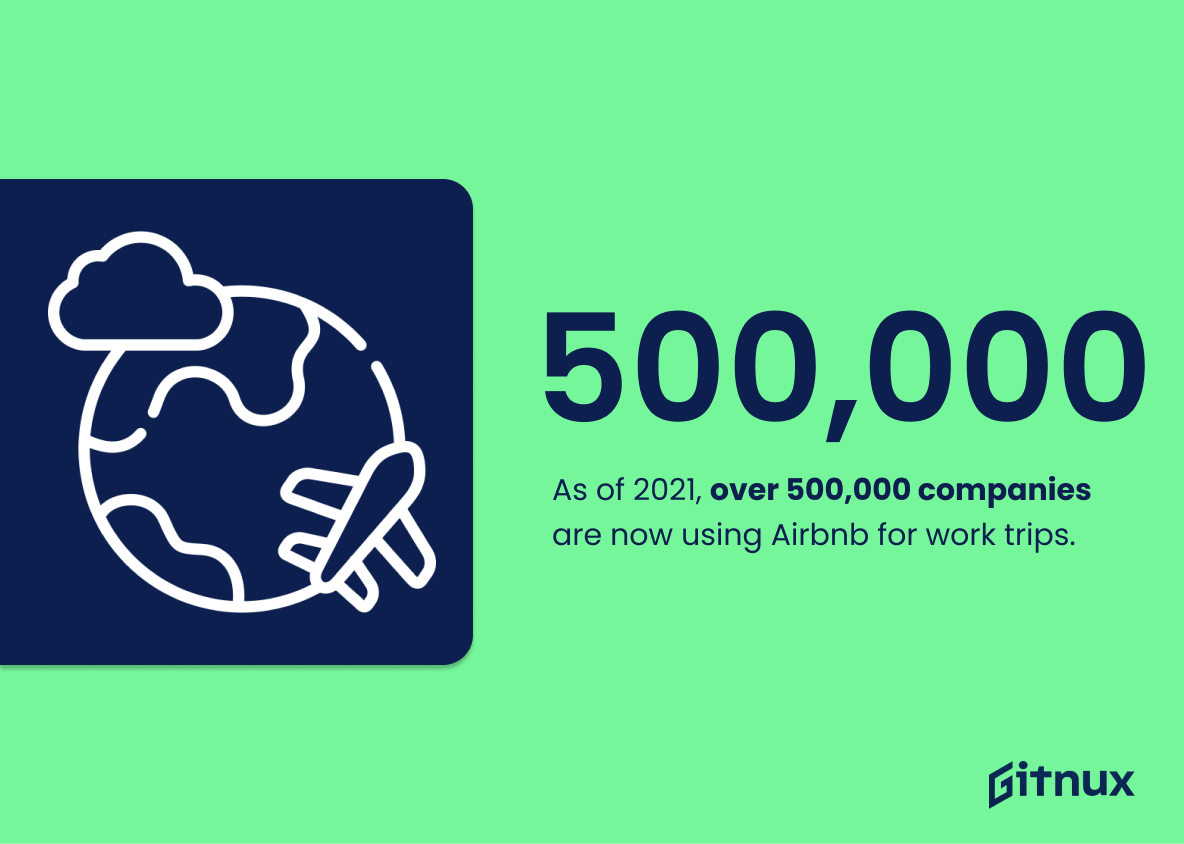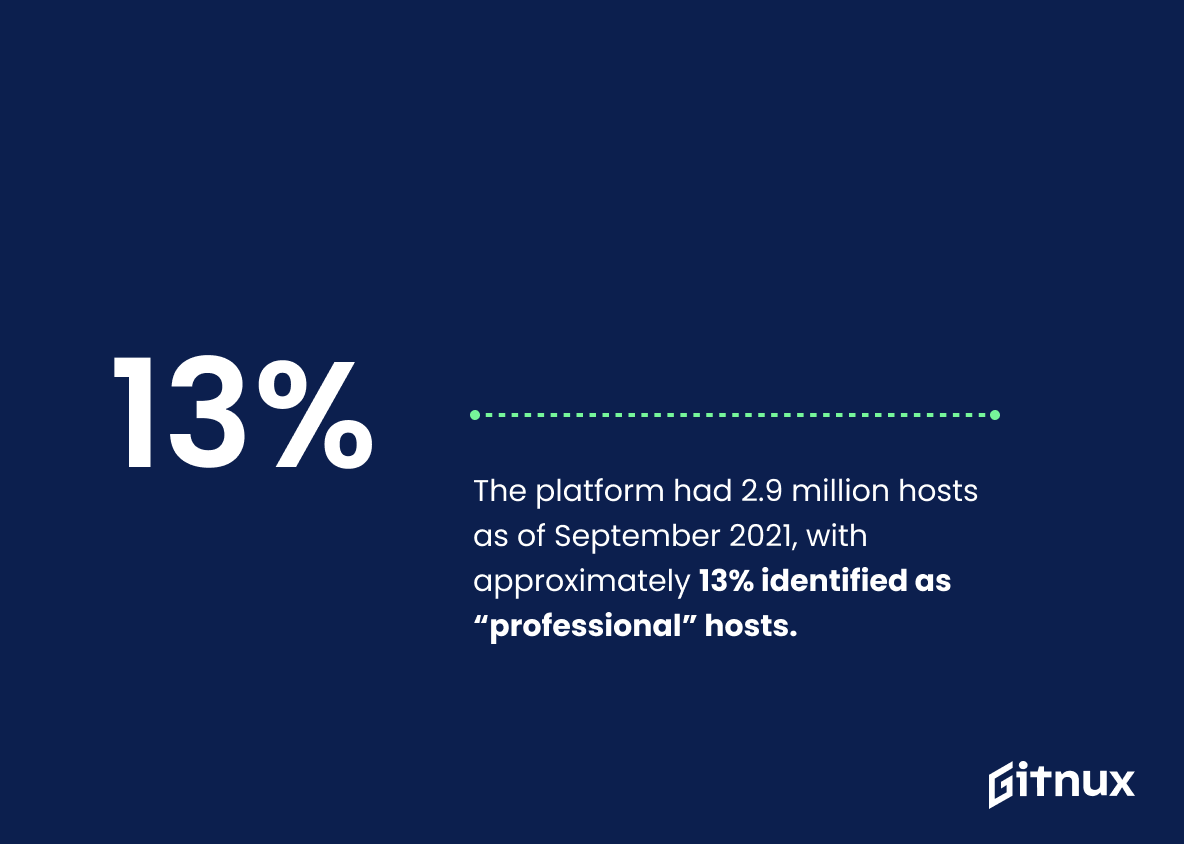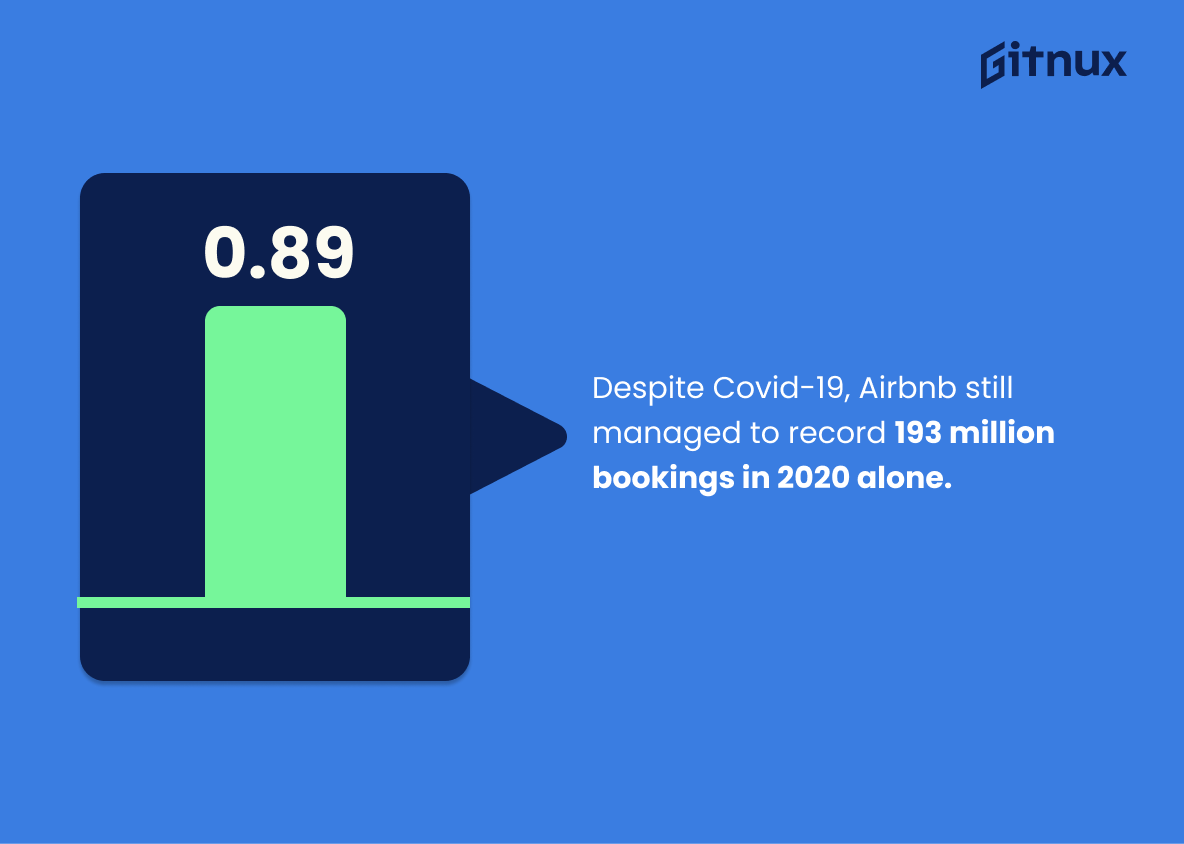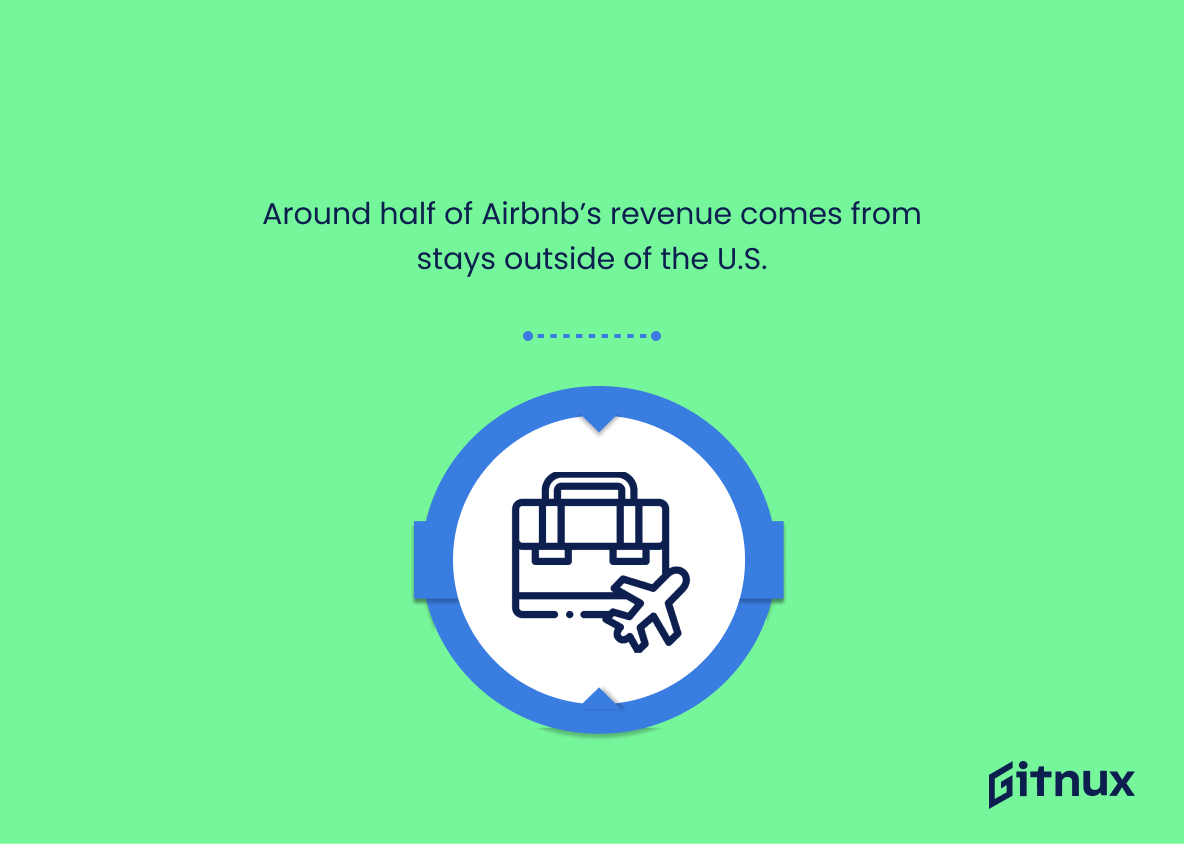In today’s evolving travel and accommodation landscape, one company that has consistently marked its growing influence is Airbnb. Pioneering the home-sharing concept, Airbnb has redefined the way people travel, encouraging a widespread acceptance of a shared economy. This blog post dives deep into the remarkable growth story of Airbnb, exploring a medley of enlightening growth statistics that highlight its impressive trajectory.
From humble beginnings to its current global footprint, we present you with a comprehensive analysis of Airbnb’s expansion – a testament to its pioneering spirit, disruptive innovation, and customer-centric approach. These intriguing statistics will not only provide insights into Airbnb’s success but also shed light on the trends shaping the future of the travel industry.
The Latest Airbnb Growth Statistics Unveiled
In 2009, Airbnb had 21,000 listings worldwide. By 2019, that number exploded to approximately 6 million.
The dramatic surge from 21,000 listings to a staggering 6 million over a decade paints a compelling picture of Airbnb’s explosive growth. This is not just a story about numbers, but a vivid, real-world testament to Airbnb’s market penetration and acceptance worldwide.
In ten transformational years, Airbnb has revolutionized the hospitality sector, redefining how people travel, live, work, and connect across the globe. This data point offers a profound insight on the magnitude and pace of this growth, an essential narrative in any discourse about Airbnb’s success journey.
According to a survey, around 60% of Americans are now familiar with Airbnb, which is up from 20% in 2015.
Highlighting Airbnb’s rising familiarity among the American public, this particular metric demonstrates the impressive surge in the platform’s familiarization from 2015 to now. Engaged in an online travel marketplace playing field, Airbnb has substantially enlarged its footprint, as borne out by the increased percentage of those recognizing it.
This reflects not just its successful marketing campaigns, but also its exponential growth as a prominent player in the lodging and tourism sector. This marker dons tremendous importance in mapping out Airbnb’s escalating prevalence, enhancing our understanding of its growth trajectory against its competitors.
In 2014, Airbnb reported around 10 million guest stays. As of 2020, this number had increased to over 326 million.
Illustrating a significant trajectory, this stark rise in Airbnb guest stays from 10 million in 2014 to over 326 million in 2020 embodies the meteoric growth of the company. It serves as a powerful snapshot in the narrative of Airbnb’s expanding influence in the hospitality industry.
With the numbers speaking louder than words, this data point is a clear testament to Airbnb’s compelling evolution and capacity to disrupt conventional sectors. Therefore, its relevance to an Airbnb Growth Statistics blog post is unquestionable, providing readers with concrete evidence of the business’s upsurging popularity and demand worldwide.
Airbnb had 150 million users worldwide as of September 2020.
Highlighting the sweeping figure of 150 million users worldwide until September 2020, paints an illustrative picture of Airbnb’s successful expansion narrative. The booming numbers serve as a testament to the platform’s robust growth trajectory and its widespread acceptance. Moreover, this data potentially indicates Airbnb’s substantial impact on the hospitality industry, thereby underlining its influential position in the global rental marketplace.
It’s a powerful indicator that narrates the relentless success saga of Airbnb while simultaneously forecasting its continued dominance. Furthermore, this statistic imbues prospective users and investors with confidence in Airbnb’s potential, hinting at an even brighter future.
As of 2021, there are over 4 million Airbnb hosts globally.
Showcasing the formidable growth of Airbnb, the figure of over 4 million hosts around the world serves as a testament to the digital-age decentralized hospitality revolution initiated by this trailblazing platform. The revelation of this magnitude not only exhibits the scale at which Airbnb operates, but also emphasizes the trust end users place in it globally.
It paints a picture of an extensive, expanding network of homeowners opening their spaces to travellers, contributing to a dynamic shared economy. This cascading effect of hosting and travel experiences narrates a compelling story of Airbnb’s incremental growth, shaping the narrative of our examination of Airbnb growth statistics.
The number of countries and regions with Airbnb listings is over 220.
Highlighting that Airbnb has listings in over 220 countries and regions punctuates the global expansion and reach of Airbnb. It saliently illustrates the exponential traction the company has gained and its evolution from a small start-up into a major player in the hospitality industry.
Such a robust international footprint not only testifies to the universal appeal of its business model, but also underscores Airbnb’s potential for continued growth and market dominance. An audience reading about Airbnb’s growth statistics would be marvelled at how widespread the company’s services are, reinforcing the company’s success narrative.
Paris is reported to be the city with the highest number of Airbnb listings, around over 60,000 in 2020.
Highlighting the fact that Paris had the highest number of Airbnb listings in 2020 dramatically underscores the global appeal and growth trajectory of the Airbnb platform. Paris, being a top tourist destination, demonstrates the shift in accommodation preference among travelers from traditional hotels towards more homey, personalized spaces.
By quantifying Paris’s share in the platform with over 60,000 listings, it lends credence to the scalability and versatility of Airbnb, serving as a compelling indicator of its significant growth and global acceptance. Furthermore, the attraction of such a renowned city to the Airbnb platform presents an exciting opportunity for future expansion and potential domination in other top travel destinations worldwide.
Airbnb generated gross revenues of $3.4 billion in 2020.
In the realm of Airbnb Growth Statistics, the titanic figure of $3.4 billion in gross revenues for 2020 stands as a towering summit, serving as a testament to the company’s resilience amidst the global pandemic. This powerful figure not only underlines Airbnb’s ability to weather such an unprecedented storm, but it further indicates the constantly expanding trust and preference of global consumers towards this business model. Undeniably, this ground-breaking revenue number echoes Airbnb’s continued growth, implying a hopeful trajectory for the future, and offering insightful trends for market analysts and investors alike.
As of 2020, the average daily rate for Airbnb bookings worldwide was $117.
Diving deeper into the essence of Airbnb’s remarkable evolution, the data point concerning the worldwide average daily rate for Airbnb bookings in 2020 is a fundamental piece of the puzzle. It stands at $117, clearly highlighting significant earning potential for hosts. This nugget of information illuminates the economic impact of the platform and its attractiveness to current and potential hosts.
Moreover, knowledge of the average rate frames customer expectations when booking and allows comparisons with traditional hotel alternatives. Essentially, it serves as a barometer of Airbnb’s market positioning, affordability, and appeal to both hosts and guests, thereby significantly influencing its growth trajectory.
Airbnb’s net income dropped to -$4.59B in 2020 following the COVID-19 pandemic.
Peering deeper into Airbnb’s financial health, a critical revelation poses contemplation: Airbnb’s net income plummeted to a staggering low of -$4.59B in 2020 amidst the COVID-19 pandemic. Truly, the pandemic carved its signature on nearly all sectors, but for a blog focusing on Airbnb growth statistics, this dramatic change deserves attention—almost commands it.
The sheer scale of this income deterioration sketches a vivid picture of how external forces can severely impact growth trends. It highlights the inherent vulnerabilities in the travel and hospitality industry, with Airbnb being no exception. However, more interestingly, it unfurls an explorative pathway. Despite the daunting setback, Airbnb continues to be a key player in the market. So, what strategies did they employ to get back on their feet? How is their recovery curve plotted, and what are the future predictions in a post-pandemic era?
Essentially, this statistic, quite emblematic of the pandemic’s influence, serves as a springboard for deeper analysis, while ultimately accentuating Airbnb’s resilience and growth potential in the face of adversity.
As of 2021, over 500,000 companies are now using Airbnb for work trips.
This significant figure dramatically illuminates the diversification of Airbnb’s user base. It portrays the platform’s stretch beyond leisure travellers, illustrating market penetration into the corporate sector as well. The half-a-million mark of companies utilizing Airbnb for business trips showcases the platform’s potential to cater to work-related travel needs. This insight further underlines its evolution, dynamism, and growth trajectory, enriching any detailed narrative on Airbnb’s growth statistics.
In 2017, Airbnb’s Latin American business increased by 131% as the company added more listings and invested in marketing.
Showcasing a 131% increase in Airbnb’s Latin American business in 2017 serves to highlight the extraordinary growth trajectory the company was experiencing during that period. The substantial surge in business, driven by an increased number of listings and investment in marketing, offers readers insight into the specific strategies that have bolstered Airbnb’s expansion.
This compelling growth figure is not only a testament to the success of Airbnb’s business model, but also underscores the vast untapped potential of the Latin American market–a key piece of information for anyone interested in the sharing economy’s expansion patterns and future trends.
The platform had 2.9 million hosts as of September 2021, with approximately 13% identified as “professional” hosts.
A statistic that leaps off the page while exploring Airbnb’s growth is the revelation that by September 2021, the platform boasted a considerable 2.9 million hosts. Drilling deeper into this figure exposes an intriguing facet, around 13% of these hosts have been tagged as “professional.” This fact gives us a magnifying view into the ever-changing landscape of Airbnb’s ecosystem, underlining a significant trend toward professionalization in the hosting strategy.
Such a shift can be a signal towards an evolving business model, potentially attracting a new tier of hosts who are leveraging the platform to operate on a larger scale. Moreover, the rise in professional hosts can be an indication of the platform’s successful efforts to cultivate an environment that favors not just casual sharing economy participants, but serious business-orientated hosts as well. This progression, therefore, can greatly inform strategy development for Airbnb or directly competing companies. It may also hint industry observers and potential investors about the platform’s accelerating maturity and robust growth potential in its hosts’ segment.
Despite Covid-19, Airbnb still managed to record 193 million bookings in 2020 alone.
With an intense spotlight shone on this impressive figure, it becomes evident that Airbnb’s resilience during the swell of the Covid-19 crisis was nothing short of remarkable. Displaying not mere survival but thriving in adversity, this statistic narrates a vivid story of Airbnb’s evolution throughout 2020. Recording 193 million bookings, it essentially reflects a testament of brand trust and preference, despite travel restrictions and global anxiety over infection.
In the realm of Airbnb’s Growth Statistics, it paints a picture of remarkable growth and dynamism, reinforcing Airbnb’s unique position in the hospitality industry. It validates the company’s robust strategic meets and forecasts a potential exponential growth trajectory in the post-pandemic era.
Around half of Airbnb’s revenue comes from stays outside of the U.S.
Highlighting that approximately 50% of Airbnb’s revenue originates from non-U.S. stays underscores a crucial dimension of Airbnb’s global growth narrative. It paints Airbnb not merely as a domestic success, but a dynamic international player. Further, it signals the cross-border appeal of Airbnb’s business model, thus alluding to its ability to cater to diverse cultural contexts and traveller preferences. Ultimately, this statistic serves as a testament to Airbnb’s successful international expansion, demonstrating how its brand has transcended American shores and gained widespread acceptance globally.
Airbnb’s China business has quadrupled in 4 years since 2017.
Highlighting the fourfold growth of Airbnb’s business in China since 2017 provides compelling evidence of the company’s rapidly expansive reach. Not only does this indicate the firm’s successful entry and establishment in the massive Chinese market, it vividly portrays Airbnb’s remarkable capacity to adapt and thrive in diverse cultural and economic environments. Therefore, this particular statistic is a testament to Airbnb’s global growth narrative, offering a convincing snapshot of its significant progress over a relatively short period.
In 2022, Airbnb anticipates revenue growth of approximately 35%.
The anticipated 35% revenue growth for Airbnb in 2022 adds a spark of excitement to the blog post on Airbnb Growth Statistics. This impressive projection highlights the dynamic market presence of the company, and maps out a clear trajectory of prosperity, reflecting the potentially lucrative nature of the home-sharing marketplace.
Readers will not only get a sense of the present state of this popular home rental platform, but also a peek into the future showing how Airbnb might continue to carve out its niche in the industry. This statistic will undoubtedly infuse the blog post with an aura of optimism and foretell a compelling narrative of growth and success.
From 2019 to 2020, there was a 22% increase in nights booked in non-urban areas on Airbnb.
The figures demonstrating a 22% surge in nights booked in non-urban areas on Airbnb between 2019 and 2020 weave a captivating tale. They paint a lucid picture of a shifting trend, as travelers are increasingly venturing off the beaten path, seeking refuge in the tranquility of non-urban environments over bustling city stays.
The statistic not only reveals Airbnb’s appeal to the wanderlust-stricken but also underscores its staggering growth potential, as such non-conventional bookings indicate untapped avenues and expanding consumer preferences. The revelation signifies Airbnb’s defiance of the trend line that traditionally favors urban areas, steering us towards a new discourse on their growth narrative.
As of 2021, Airbnb, Inc. reported an increase of nearly 36% in revenue compared to 2020.
Painting a vivid picture of an ever-evolving business landscape, this statistic showcases an impressive breakthrough by Airbnb amidst a year filled with unparalleled challenges. It stands as a testament to Airbnb’s resilience, validating the effectiveness of its growth strategies within its competitive space. As an evidence that ‘every crisis is an opportunity’, this 36% leap in revenues offers insightful cues to investors, potential hosts, and travellers at large about the company’s enduring financial health and positive trends in the vacation market.
Conclusion
In essence, Airbnb’s impressive growth statistics underscore its formidable presence in the hospitality sector. Its unique business model and the flexibility it offers for hosts and travelers alike have propelled it to the forefront of the sharing economy. Despite facing a myriad of hardships brought about by the global pandemic, the potential for bounce-back is clearly evident.
Airbnb’s continuous rise offers some critical lessons on innovation, adaptability, and customer-centric approach, reaffirming its status as a true game-changer in vacation rentals. It is indisputable that this peer-to-peer accommodation marketplace will continue to shape the future of travel, as it evolves in response to changing consumer trends and market dynamics. As we look ahead, we can await with great anticipation how Airbnb’s growth story unfolds and continues to reshape the hospitality landscape.
References
0. – https://www.www.statista.com
1. – https://www.www.businessinsider.com
2. – https://www.muchneeded.com
3. – https://www.www.nasdaq.com
4. – https://www.www.wired.com
5. – https://www.www.marketwatch.com
6. – https://www.www.airbnb.com
7. – https://www.expandedramblings.com
8. – https://www.www.business-standard.com
9. – https://www.news.airbnb.com
